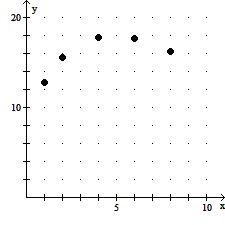Solve using the quadratic formula.4x2 - 2x = 0
A. -  , 0
, 0
B.  , -
, - 
C.  , 0
, 0
D. 0
Answer: C
You might also like to view...
The following data show the distance D, in millions of miles, and the period P, in years, of five of the planets. (The period is the time required for one revolution about the sun.) Planet Mercury Venus Earth Mars Jupiter P 0.24 0.62 1 1.88 11.87 D 36 67.1 92.9 141.7 483.4? A: Use power regression to model the distance as a function of the period. Use two digits of accuracy for the coefficient and for the power.B: Plot the data along with the power model you found in part A.C: If one planet takes twice as long to orbit the sun as another, how do their distances from the sun compare? Round your to two decimal places.
What will be an ideal response?
Solve the proportion. =
= 
A. 11.424 B. 0.1 C. 9.5 D. 31.6
Solve the problem. POLLUTION 
 Years since 1990Use the ordered pairs (1, 12.81), (4, 17.76), and (8, 16.24) to find a quadratic function that models the data. Round the values of a, b, and c to two decimal places.
Years since 1990Use the ordered pairs (1, 12.81), (4, 17.76), and (8, 16.24) to find a quadratic function that models the data. Round the values of a, b, and c to two decimal places.
A. y = 3.10x2 - 0.29x + 10.00 B. y = 0.29x2 + 3.10x + 10.00 C. y = -3.1x2 - 0.29x + 10.00 D. y = -0.29x2 + 3.10x + 10.00
Solve the problem.The polynomial G(x) = -0.006x4 + 0.140x3 - 0.53x2 + 1.79x measures the concentration of a dye in the bloodstream x seconds after it is injected. Does the concentration increase between 12 and 13 seconds?
A. Yes B. No